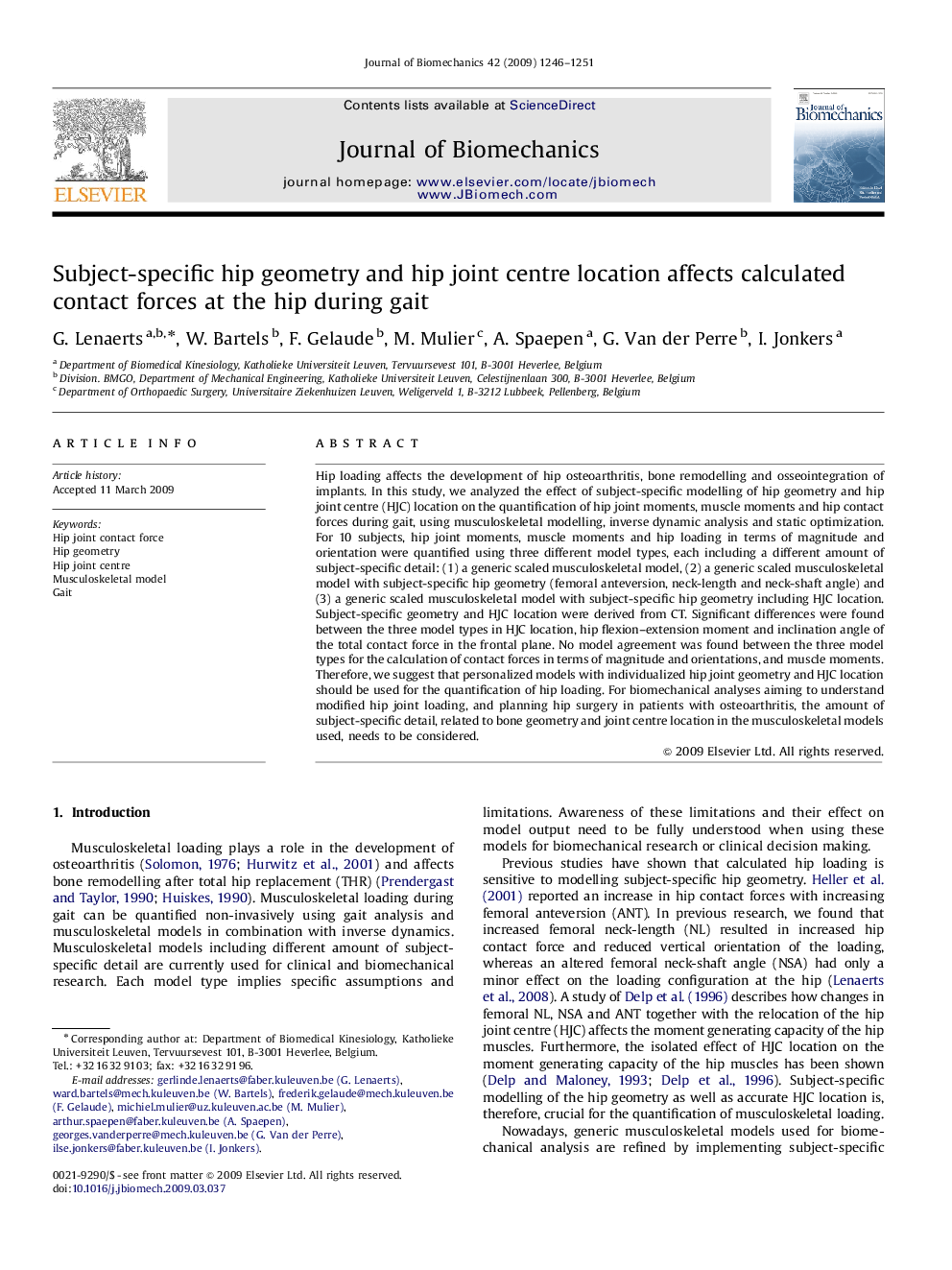| Article ID | Journal | Published Year | Pages | File Type |
|---|---|---|---|---|
| 873358 | Journal of Biomechanics | 2009 | 6 Pages |
Hip loading affects the development of hip osteoarthritis, bone remodelling and osseointegration of implants. In this study, we analyzed the effect of subject-specific modelling of hip geometry and hip joint centre (HJC) location on the quantification of hip joint moments, muscle moments and hip contact forces during gait, using musculoskeletal modelling, inverse dynamic analysis and static optimization. For 10 subjects, hip joint moments, muscle moments and hip loading in terms of magnitude and orientation were quantified using three different model types, each including a different amount of subject-specific detail: (1) a generic scaled musculoskeletal model, (2) a generic scaled musculoskeletal model with subject-specific hip geometry (femoral anteversion, neck-length and neck-shaft angle) and (3) a generic scaled musculoskeletal model with subject-specific hip geometry including HJC location. Subject-specific geometry and HJC location were derived from CT. Significant differences were found between the three model types in HJC location, hip flexion–extension moment and inclination angle of the total contact force in the frontal plane. No model agreement was found between the three model types for the calculation of contact forces in terms of magnitude and orientations, and muscle moments. Therefore, we suggest that personalized models with individualized hip joint geometry and HJC location should be used for the quantification of hip loading. For biomechanical analyses aiming to understand modified hip joint loading, and planning hip surgery in patients with osteoarthritis, the amount of subject-specific detail, related to bone geometry and joint centre location in the musculoskeletal models used, needs to be considered.
